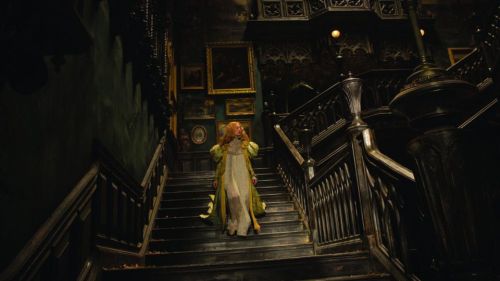#structuralism
1928 - 1945: Generation Cancer (Silent Generation)
Pluto was mostly in Cancer
Pluto in Cancer people finds their power through emotional intensity and deep relationships. They are very possessive towards those they love. They may even try to control their emotions. It is difficult for them to let go of possessions and people. When it is inevitable, they try to control how it ends. They might have experienced deeper traumas concerning mothers and family-life. Cancer Pluto hangs doggedly onto childhood beliefs, even though experience tells them otherwise. It may help them to learn a little detachment now and then. They feel a deep need to have their own home. They are the ones who campaign on family values. They are sensitive and sympathetic. They are very protective. Cancer Pluto can be healing, nurturing and caring. They can also be responsible for escalating dangers by trying to always be the one who is passive-aggressive. It is their overprotective nature that keeps them striving to protect those they love. Family helps them feel needed and wanted. Individuals born when Pluto was in Cancer are destined to go through many changes that may affect their sense of security. They may develop compulsive emotional needs due to not getting their needs met during childhood. Music and art, in general, are the most soothing outlets for them. They just want the security, the peace and sincerity they were promised by the generation before them but the happiness was a facade now they want something sincere. With this generation greater respect for women-hood was born. These people started to get involved with Structuralism more. Structuralism: a method of interpretation and analysis of aspects of human cognition, behavior, culture, and experience, which focuses on relationships of contrast between elements in a conceptual system. Perhaps they had an innate desire to dig deep into their Canceristic intuition.
(source: alwaysastrology)
1928 - 1934: Kids of Aries Progress in Initiation (Uranus in Aries)
1934 - 1941: Kids of Taurus Progress in Values (Uranus in Taurus)
1941 - 1948 (-1945): Kids of Gemini Progress in Intellect (Uranus in Gemini)
Post link
Crimson Peak Erects and Subverts the Gothic Family Tree | The A.V. Club
The only surprise is that when the danger closes in at last, and with a golden doctor on the doorstep to rescue her, Edith takes a knife and starts stabbing her own way out. It’s Del Toro’s most satisfying story trick that no one in the movie takes much notice. Often in the gothic, monstrous women are objects of horror—look no further than Countess Zaleska and her Sapphic ilk. But Crimson Peak itself gives no indication this isn’t the way a woman behaves; Lucille is a serial killer who views Edith’s violence as fair play. It’s the traditional gothic that’s taught us to expect a woman paralyzed by fear. That expectation makes Edith’s arc a slowly unfurling subversion.
It finally happened. I finally saw Crimson Peak. And it was everything I hoped it would be. I’ll just point to this A.V. Club article, because it captures almost everything I want to say about it.
A major part of why I love Victorian lit so much and why I ended up studying it is that troping and archetypal stories zing around in my brain like a pinball machine. They do something to me that just lights it up; far from mere narrative laziness, tropes are a message in a bottle, a time capsule. They tell us what that bubble of culture was collectively trying to work through, understand, or solve, and they vary so wildly from place to place and century to century that they provide a highly-specific window into the anxieties of a particular place and time.
And Crimson Peak is clearly crafted by a seasoned gothic horror fan. Every review I’ve read so far (rightly) makes comparisons to a range of gothic horror standards: Rebecca, Jane Eyre, The Monk, etc. The pure innocent pulled into a sexual and murderous death game, the fascination with decay and decadence and rot, the land itself as metaphor, all these are the central calling cards of the genre.
This A.V. Club article comes closest to saying what I wanted to say, though: reusing and rehashing old tropes is lazy. Subverting them is narrative ingenuity. Edith taking up a knife herself, and the narrative refusing to turn her into a monster for it, is incredibly subversive at its heart. The idea that Edith can end the movie changed by what she’s experienced but not a villain herself is incredibly rare and incredibly powerful. A weaker article from the Guardian claims that Crimson Peak is empowering simply for portraying monstrous women, which is not entirely wrong, but misses its mark a bit. Monstrous women are everywhere, and have been forever. From Grendel’s mother to the vampiric women of Dracula, women are monstrous when what makes them women is perverted. In the case of Grendel’s mother, her maternal instincts are over-exaggerated, becoming vengeful bloodlust (though comparing tropes in Beowulf to 19th century ones is a bit anachronistic). Most often, we see monstrous women’s perversion as a warping of their sexuality; Lucille lines up perfectly with her predecessors–overdeveloped appetites, sexual and bloody, is what makes her a monster. The female vampires of Dracula drip sexuality–my jaw actually dropped when I first read this paragraph:
Lower and lower went her head as the lips went below the range of my mouth and chin and seemed about to fasten on my throat. Then she paused, and I could hear the churning sound of her tongue as it licked her teeth and lips, and could feel the hot breath on my neck. Then the skin of my throat began to tingle as one’s flesh does when the hand that is to tickle it approaches nearer–nearer. I could feel the soft, shivering touch of the lips on the super-sensitive skin of my throat, and the hard dents of two sharp teeth, just touching and pausing there. I closed my eyes in a languorous ecstasy and waited–waited with beating heart.
Like, even now, this is diiiiirty. But they don’t even match Carmilla, the “sexuality as vampirism metaphor” to end all sexy vampirism stories. In Carmilla, a pure and innocent girl is perverted by the aggressive sexual advances of her female friend, until she is revealed to be a vampire and killed by a stake through the heart (is it Freudian in here or is it just me?). If you think that surely, no one could have written a lesbian story in 1872, it must have been more subtle than how I described it, see for yourself:
Sometimes after an hour of apathy, my strange and beautiful companion would take my hand and hold it with a fond pressure, renewed again and again; blushing softly, gazing in my face with languid and burning eyes, and breathing so fast that her dress rose and fell with the tumultuous respiration. It was like the ardour of a lover; it embarrassed me; it was hateful and yet overpowering; and with gloating eyes she drew me to her, and her hot lips travelled along my cheek in kisses; and she would whisper, almost in sobs, “You are mine, you shall be mine, and you and I are one for ever”.
Women are monstrous when they want too much, and Lucille is no exception. If I’m remembering correctly, she’s two years older than her brother, which makes the revelation of their long-running sexual relationship even more horrifying and abusive. But she’s not new. Women who have grown too powerful and need to be culled have been around for as long as sexism has taken its contemporary form. But Edith getting powerful, refusing to be the delicate butterfly that Lucille thinks she is? Now, that’s new. And it’s incredible. She gets powerful and she stays powerful, she gets big and bigger.
Post link
Hey girl,
Let’s discuss the intricacies of the linguistic turn and American historiography on my Twitter @PHryangosling.
Post link




